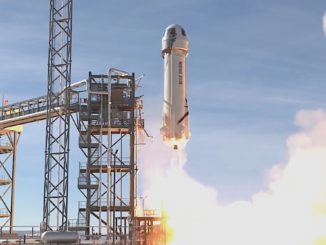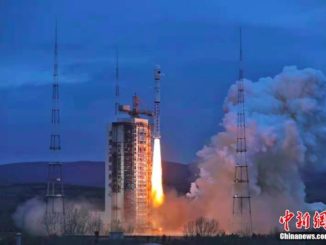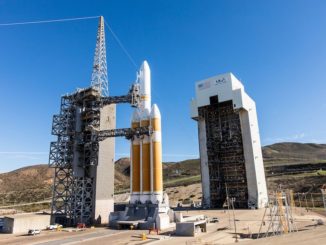Watch a replay of our live coverage of the countdown and launch of a SpaceX Falcon 9 rocket with Arabsat’s Badr 8 communications satellite from Space Launch Complex 40 at Cape Canaveral Space Force Station, Florida. Follow us on Twitter.
SFN Live
SpaceX kicked off Memorial Day weekend with an overnight launch Saturday from Cape Canaveral, boosting a nearly five-ton communications satellite into orbit for Arabsat, a multinational consortium providing TV and video broadcast services across the Middle East.
SpaceX scrubbed a launch attempt early Wednesday at Cape Canaveral due to thick cloud cover, then delayed the liftoff of the Falcon 9 rocket to later in the week to wait for improved weather and to make room for the test-firing of United Launch Alliance’s Vulcan rocket at a neighboring launch pad.
In the end, ULA postponed the test-firing of its Vulcan rocket, and SpaceX was approved by the Space Force’s Eastern Range for another countdown late Friday.
SpaceX pushed back the launch time more than hour to wait for winds to subside, then gave the go-ahead to fuel the Falcon 9 rocket for liftoff at 12:30 a.m. EDT (0430 UTC) Saturday.
Darting through low-level clouds, the Falcon 9 rocket headed east from Cape Canaveral to deliver the Badr 8 satellite into an elliptical “supersynchronous” transfer orbit about a half-hour after liftoff. The rocket accelerated the spacecraft to a top speed of 21,999 mph (35,405 kilometers per hour), according to telemetry readout on SpaceX’s live webcast of the missions.
Liftoff of SpaceX’s Falcon 9 rocket with Arabsat’s Badr 8 satellite to provide TV broadcast and communications services over Europe, Africa, the Middle East, and Central Asia. https://t.co/pDNSB6VzfK pic.twitter.com/Y4h56VWu3S
— Spaceflight Now (@SpaceflightNow) May 27, 2023
The launch marked SpaceX’s 36th flight of the year, and the 26th orbital launch attempt so far in 2023 from Florida’s Space Coast.
The nearly 10,000 pound (4.5-metric ton) Badr 8 communications satellite was closed up inside the Falcon 9’s nose cone for liftoff Saturday. Built by Airbus Defense and Space, the Badr 8 satellite, also known as Arabsat 7B, will provide C-band and Ku-band communications services to replace capacity currently offered by the aging 15-year-old Badr 6 satellite in geostationary orbit.
Badr 8 will move into position at the same orbital slot as Badr 6, located along the equator at 26 degrees east longitude. The Badr satellites are owned by Arabsat, a pan-Arab consortium of 21 member states based in Riyadh, Saudi Arabia. Badr 8 will provide television broadcast services, video relay, and data services across the Middle East and North Africa, Europe, and Central Asia.
Arabsat says its investment in the Badr 8 program totals about $300 million, including the spacecraft manufacturing contract with Airbus, the launch agreement with SpaceX, insurance, and ground infrastructure.
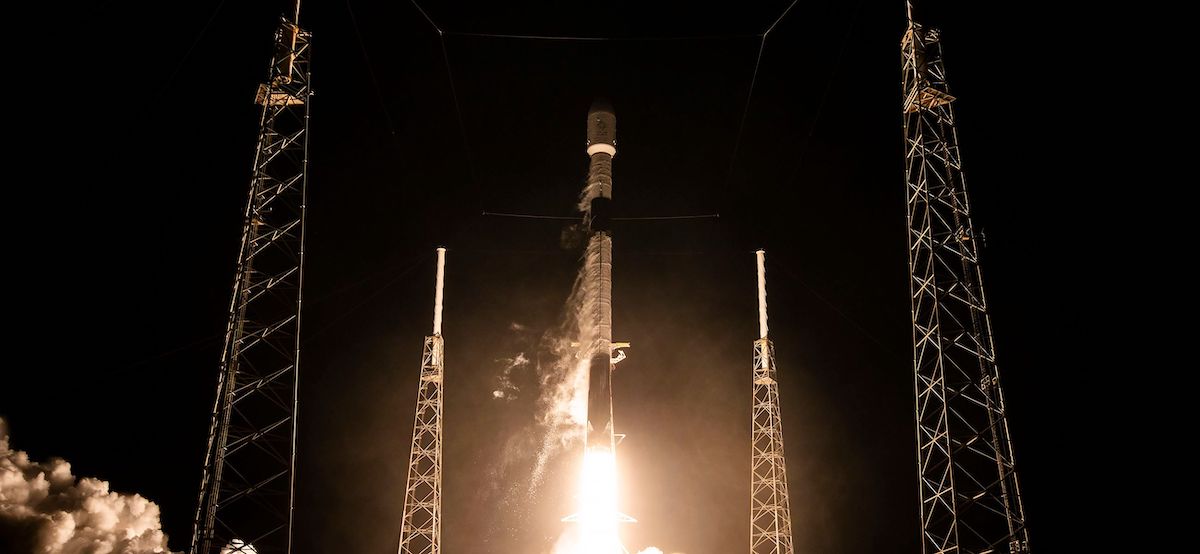
Badr 8 is based on Airbus’s Eurostar Neo satellite platform, the company’s newest large spacecraft bus. After separation from the Falcon 9 rocket about 37 minutes into the mission, Badr 8 was expected to unfurl its solar panels and run through a series of post-launch checkouts under the supervision of Airbus ground controllers in Toulouse, France.
Then Badr 8 will use low-thrust, high-efficiency plasma thrusters to maneuver into a circular geostationary orbit more than 22,000 miles (nearly 36,000 kilometers) over the equator, settling into an orbit that matches the speed of Earth’s rotation, giving the spacecraft a constant view of its coverage zone stretching from Europe, to the Middle East, and into Central Asia.
The orbital adjustments will take several months, then Badr 8 will complete in-orbit testing and should be ready to commence operational service for Arabsat later this year. The Badr 8 spacecraft is designed for a 15-year service life.
SpaceX’s first stage booster — numbered B1062 — has landed on a drone ship more than 400 miles downrange from Cape Canaveral. This was the 14th flight of this booster.
The upper stage is now in a parking orbit with Arabsat’s Badr 8 telecom satellite.https://t.co/pDNSB6VzfK pic.twitter.com/5mnaseLg1p
— Spaceflight Now (@SpaceflightNow) May 27, 2023
Besides its purpose as a commercial communications satellite, Badr 8 also hosts an experimental laser communications payload for Airbus. The TELEO demonstration will test new optical communications technology in a partnership between Airbus, the French space agency CNES, and Safran Data Systems.
The TELEO payload will test the technology’s ability to beam data from the satellite to a ground station using lasers, allowing for the transfer of information at up to 10 gigabits per second. Airbus and its partners hope to advance the technology for future missions to achieve a one terabit per second bit rate using optical communications.
“This TELEO demonstrator will also enable very high capacity optical feeder link communications, by nature highly robust against jamming, as part of the development by Airbus of a new generation of optical communications technology in space,” Airbus said in a press release.
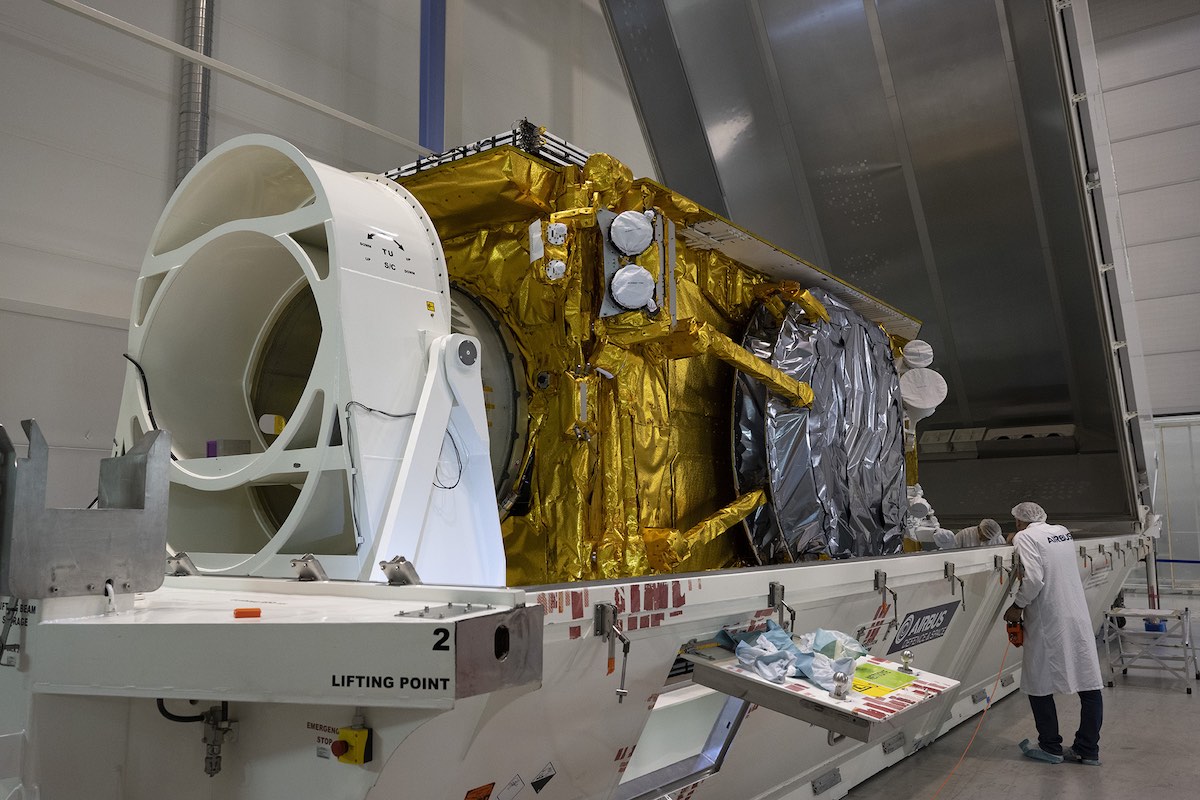
The launch of Badr 8 continued a jam-packed sequence of SpaceX missions. It was the fourth SpaceX Falcon 9 launch in a little more than a week, following a Falcon 9 flight with Starlink satellites May 19 from Cape Canaveral, a Falcon 9 launch from California on May 20 with payloads for OneWeb and Iridium, and the launch of Axiom Space’s Ax-2 private astronaut mission May 21 from Kennedy Space Center in Florida.
Working out of SpaceX’s launch and landing control center just south of Cape Canaveral Space Force Station, engineers supervised the late-night countdown leading up to liftoff of the Badr 8 mission early Saturday. The Falcon 9 rocket was filled with a million pounds of kerosene and liquid oxygen propellants in the final 35 minutes before liftoff.
After teams verified technical and weather parameters were all “green” for launch, the nine Merlin 1D main engines on the first stage booster flashed to life with the help of an ignition fluid called triethylaluminum/triethylborane, or TEA-TEB. Once the engines ramped up to full throttle, hydraulic clamps opened to release the Falcon 9 for its climb into space.
The nine main engines produced 1.7 million pounds of thrust for more than two-and-a-half minutes, propelling the Falcon 9 and Badr 8 into the upper atmosphere. Then the booster stage shut down and separated from the Falcon 9’s upper stage to begin a controlled descent toward SpaceX’s drone ship “Just Read the Instructions” parked in the Atlantic Ocean.
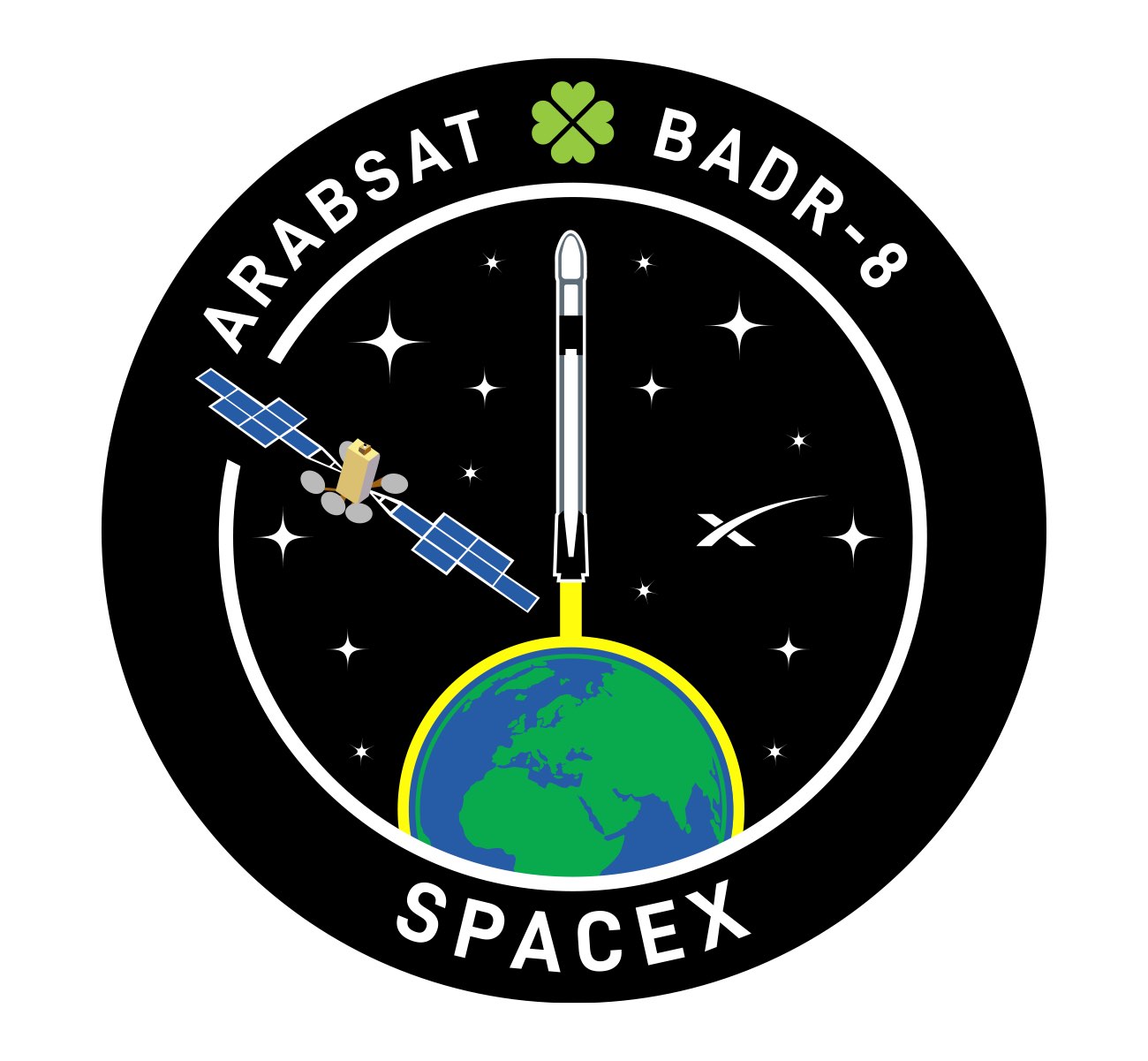
The booster, designated B1062, extended titanium hypersonic grid fins and used cold gas nitrogen thrusters to control its orientation, then reignited three of its nine main engines for a nearly 30-second braking maneuver during re-entry. A final landing burn with just the center engine slowed the rocket for touchdown on the drone ship about eight-and-a-half minutes into the mission.
A SpaceX recovery ship was also in position in the Atlantic to recover the Falcon 9 rocket’s payload fairing after the nose cone’s two clamshell halves parachute into the sea. The payload fairing jettisoned from the rocket about three-and-a-half minutes into the flight, shortly after ignition of the Falcon 9’s upper stage engine.
The Falcon 9 rocket fired its upper stage engine two times to inject the Badr 8 spacecraft into an elliptical supersynchronous transfer orbit. Separation of Badr 8 from the Falcon 9’s upper stage was confirmed at T+plus 37 minutes, 13 seconds.
Badr 8 separation.
Arabsat’s new communications satellite has deployed from the upper stage of SpaceX’s Falcon 9 rocket as the vehicles soared over the Indian Ocean.
Badr 8 will provide TV broadcast services and hosts a laser communications experiment.https://t.co/pDNSB6VzfK pic.twitter.com/NfasMliHxV
— Spaceflight Now (@SpaceflightNow) May 27, 2023
ROCKET: Falcon 9 (B1062.14)
PAYLOAD: Badr 8 communications satellite
LAUNCH SITE: SLC-40, Cape Canaveral Space Force Station, Florida
LAUNCH DATE: May 26/27, 2023
LAUNCH TIME: 12:30 a.m. EDT (0430 UTC)
WEATHER FORECAST: 30% probability of acceptable weather; Main concerns are cumulus clouds, electrical fields, and ground winds
BOOSTER RECOVERY: “Just Read the Instructions” drone ship in the Atlantic Ocean
LAUNCH AZIMUTH: East
TARGET ORBIT: Supersynchronous transfer orbit
LAUNCH TIMELINE:
- T+00:00: Liftoff
- T+01:12: Maximum aerodynamic pressure (Max-Q)
- T+02:33: First stage main engine cutoff (MECO)
- T+02:36: Stage separation
- T+02:44: Second stage engine ignition
- T+03:22: Fairing jettison
- T+06:29: First stage entry burn ignition (three engines)
- T+06:51: First stage entry burn ends
- T+08:10: Second stage engine cutoff (SECO 1)
- T+08:23: First stage landing burn ignition (one engine)
- T+08:44: First stage landing
- T+29:03: Second stage engine restart
- T+30:02: Second stage engine cutoff (SECO 2)
- T+37:13: Badr 8 separation
MISSION STATS:
- 227th launch of a Falcon 9 rocket since 2010
- 238th launch of Falcon rocket family since 2006
- 14th launch of Falcon 9 booster B1062
- 192nd Falcon 9 launch from Florida’s Space Coast
- 126th Falcon 9 launch from pad 40
- 181st launch overall from pad 40
- 168th flight of a reused Falcon 9 booster
- 2nd SpaceX launch for Arabsat
- 33rd Falcon 9 launch of 2023
- 36th launch by SpaceX in 2023
- 26th orbital launch attempt based out of Cape Canaveral in 2023
Email the author.
Follow Stephen Clark on Twitter: @StephenClark1.

